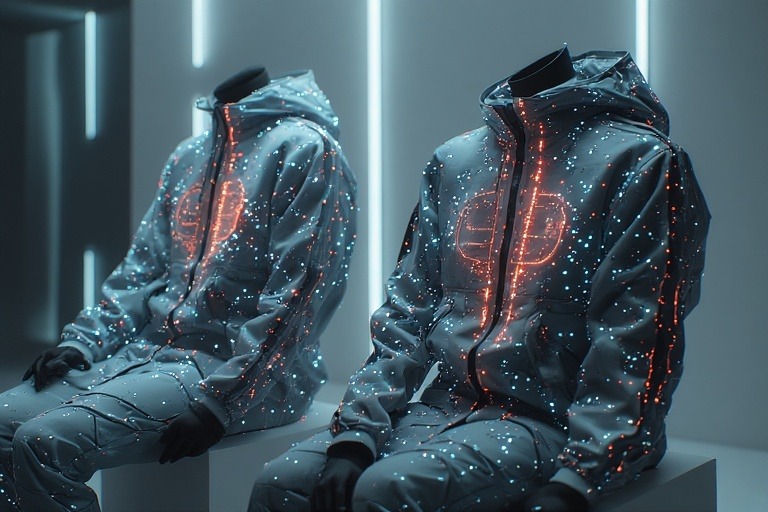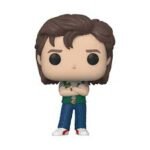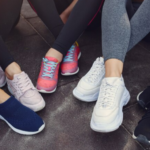Technology is no longer limited to gadgets and smartphones — it has stitched its way into fashion. Smart clothing and wearable health apparel are revolutionizing how we monitor health, fitness, and lifestyle. From shirts that track your heartbeat to socks that detect circulation issues, these innovations combine style with science. In 2025, the market is booming, offering consumers functional yet fashionable options.
📈 Why Smart Clothing Matters in 2025
Health-conscious lifestyles, post-pandemic wellness trends, and the rise of AI-driven health tracking have created a huge demand for smart apparel. Unlike fitness bands or smartwatches, these garments embed sensors directly into fabric, making health monitoring seamless and non-intrusive.
Consumers are now looking for solutions that:
-
Track real-time biometrics (heart rate, oxygen levels, stress).
-
Offer comfort and wearability without bulky devices.
-
Integrate with apps and smartphones for health insights.
Smart apparel has become a blend of necessity and lifestyle statement, appealing to both athletes and everyday users.
👟 Popular Types of Smart Clothing
Smart clothing has expanded across multiple categories:
-
Smart T-Shirts & Bras → Monitor heart rate, breathing patterns, and calories burned.
-
Smart Socks & Insoles → Track gait, posture, and even prevent injuries.
-
Smart Jackets & Vests → Offer thermal regulation, muscle recovery, and GPS connectivity.
-
Smart Underwear & Sleepwear → Monitor sleep cycles, stress, and recovery phases.
This variety shows how deeply integrated health tech is becoming with daily wardrobes.
🔬 Technology Behind the Fabric
At the core of wearable health apparel are bio-sensing fibers and conductive threads. These fabrics contain micro-sensors that measure physiological signals. The data is then sent to connected devices or cloud systems, where AI algorithms analyze it and provide actionable insights.
Unlike traditional wearables, smart clothing doesn’t feel like “technology” — it feels like normal clothing. This is the biggest competitive edge driving adoption.
⚖️ Smart Clothing vs. Traditional Wearables
When comparing smart clothing with smartwatches and fitness bands, a few distinctions emerge:
-
Comfort: Clothing offers a natural experience, while watches can feel restrictive.
-
Accuracy: Smart apparel provides closer-to-body readings across multiple points, improving accuracy.
-
Fashion Element: Apparel integrates health tracking without compromising style.
-
Price Point: Currently, smart clothing tends to be pricier than smartwatches.
In 2025, hybrid use is trending — people combine smart clothing with wearables for comprehensive health tracking.
🌍 Leading Brands & Innovations
Some frontrunners in the space include:
-
Hexoskin – Smart shirts for athletes and medical use, offering detailed biometric analysis.
-
Nadi X – Yoga leggings with built-in haptic feedback to improve posture.
-
Ambiotex – Smart shirts with real-time performance tracking for professionals.
-
OMsignal – Bras and shirts designed for everyday health monitoring.
These brands are setting the standard for wearable wellness fashion, bridging the gap between healthcare and lifestyle.
💡 Benefits of Smart Clothing
-
Holistic Health Monitoring – Track multiple vitals simultaneously.
-
Early Detection – Helps spot irregularities like sleep apnea or cardiovascular stress.
-
Performance Optimization – Athletes can improve form, posture, and recovery.
-
Lifestyle Integration – Works seamlessly in everyday life, unlike bulky wearables.
For users who prioritize health without compromising style, this is the next-level solution.
⚠️ Challenges & Limitations
While exciting, smart clothing isn’t without flaws:
-
High Cost → Premium technology means expensive price tags.
-
Durability Issues → Frequent washing may affect sensors.
-
Battery Life → Some require charging, which can feel inconvenient.
-
Accessibility → Still niche, not yet mainstream like fitness bands.
However, as technology scales, prices are expected to drop, making smart clothing more accessible.
🔮 Future Trends in Smart Apparel
Looking ahead, smart clothing is expected to evolve with:
-
AI-driven personalization for customized fitness and health plans.
-
Integration with telemedicine, allowing doctors to receive patient data remotely.
-
Fashion-tech collaborations between luxury brands and health startups.
-
Sustainability focus — eco-friendly fabrics with embedded smart fibers.
By 2030, smart clothing could become as common as athleisure wear today, making it both a health necessity and style staple.
🧠 Final Verdict
Smart clothing and wearable health apparel are not just passing trends; they represent the future of fashion and wellness convergence. In 2025, they are still in their growth stage — slightly expensive but incredibly promising. Compared to traditional wearables, they offer greater accuracy, comfort, and integration into daily life.
If you’re someone who values both health and style, investing in smart clothing could be one of the smartest lifestyle decisions you make this year.















